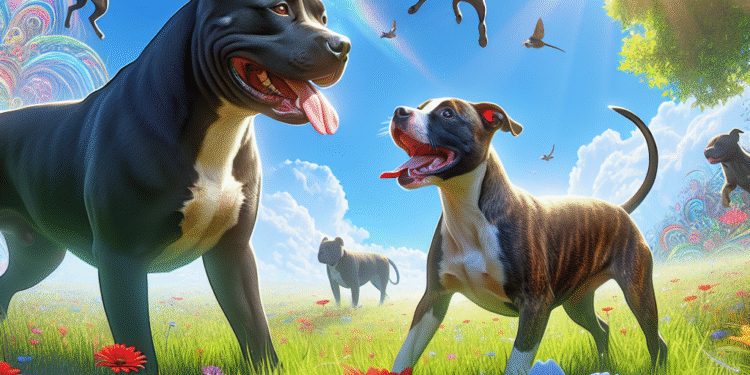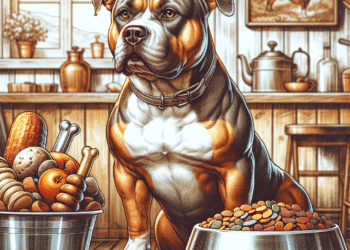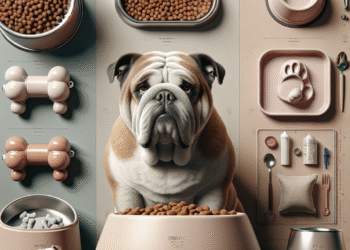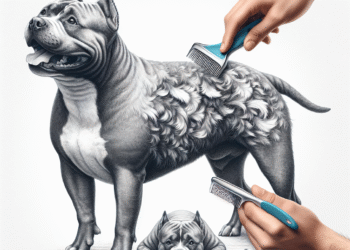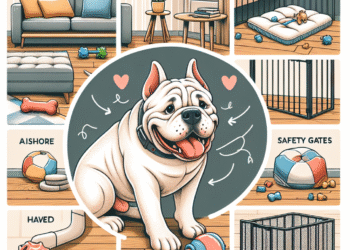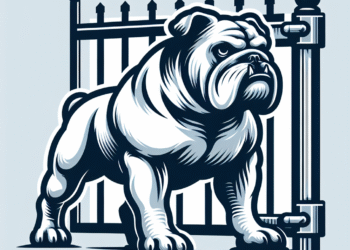Bully breeds, including Bulldogs, Pit Bulls, and Bull Terriers, are known for their muscular builds and spirited personalities. Proper nutrition is crucial for maintaining their health and vitality. In this ultimate guide, we’ll cover everything you need to know about feeding your adult bully dog, from understanding their nutritional needs to selecting the best food options.
Understanding Nutritional Needs
1. Protein Requirements
Bully dogs are muscular and active, necessitating a high-protein diet to support muscle maintenance and recovery. Aim for a dog food that contains at least 20-30% protein from high-quality sources like chicken, beef, or fish.
2. Fats for Energy
Healthy fats are essential for providing energy and supporting skin and coat health. Look for dog foods that contain sources like fish oil or chicken fat, with a fat content of about 8-15%. Omega-3 and Omega-6 fatty acids are particularly beneficial for joint health and reducing inflammation.
3. Carbohydrates and Fiber
While protein and fats are crucial, carbohydrates provide a necessary energy source, especially for active bully dogs. Choose foods that contain whole grains like brown rice or oats, or vegetables like sweet potatoes. Fiber supports digestive health, so include a balance of these ingredients in their diet.
4. Vitamins and Minerals
Bully dogs need essential vitamins and minerals to support their immune system, bone health, and overall well-being. Look for dog foods enriched with vitamins A, D, E, and minerals like calcium and phosphorus.
Key Considerations
1. Age and Activity Level
Adult bully dogs have different nutritional needs compared to puppies or senior dogs. Consider their age and activity level when selecting food. An active dog may need more calories than one who is less active. Adjust portion sizes accordingly.
2. Allergies and Sensitivities
Some bully breeds can be prone to food allergies or sensitivities. Common allergens include grains, beef, and dairy. If your dog shows signs of allergies (itching, digestive issues), consult your veterinarian. You may need to consider grain-free or limited-ingredient diets.
3. Weight Management
Maintaining a healthy weight is crucial for bully breeds, as obesity can lead to joint issues and health problems. Monitor their weight and adjust portions as necessary. Consult with your vet for a target weight and calorie count appropriate for your dog.
Choosing the Right Dog Food
1. Dry Kibble vs. Wet Food
Both dry kibble and wet food have their advantages. Kibble is convenient and helps with dental health, while wet food can be more palatable and hydrating. A combination can provide variety in their diet.
2. High-Quality Brands
Invest in high-quality brand foods that use real meat as the first ingredient and avoid fillers like corn and soy. Look for brands that meet the Association of American Feed Control Officials (AAFCO) standards.
3. Homemade Diets
Some owners choose to prepare homemade meals for their dogs. If you go this route, consult with a veterinarian or a canine nutritionist to ensure that your dog’s diet is balanced and meets all nutritional needs.
Feeding Schedule
Adult bully dogs typically do well with two meals per day. This can help prevent bloating—a condition that can affect bully breeds. Divide the daily recommended food amount into two portions, offering one in the morning and the other in the evening.
Hydration
Always ensure your bully dog has access to fresh, clean water. Hydration is just as important as nutrition, particularly for active dogs. Monitor their water intake, especially in hot weather or after exercise.
Conclusion
Feeding your adult bully dog the right balance of nutrients is essential for their overall health and happiness. By understanding their specific dietary needs and choosing high-quality foods, you can promote longevity and vitality in your canine companion. Always consult with your veterinarian for personalized dietary recommendations tailored to your dog’s unique needs. With the right nutrition, your bully dog will thrive and enjoy an active, fulfilling life.


